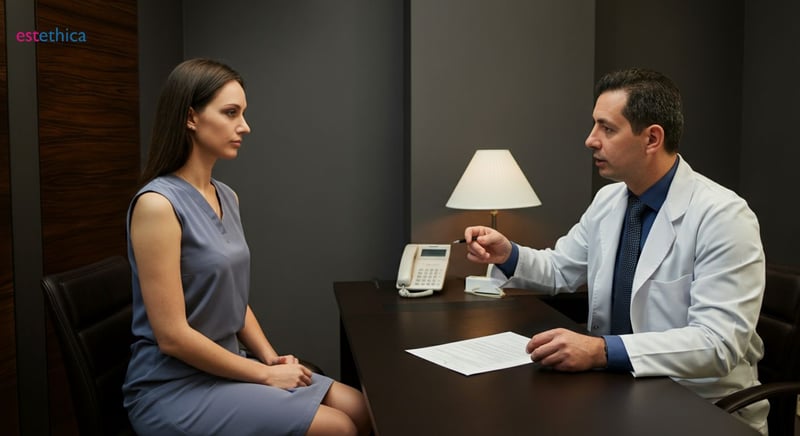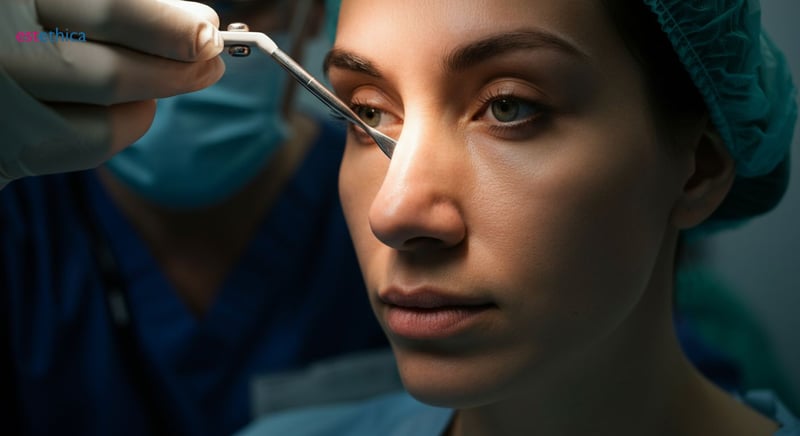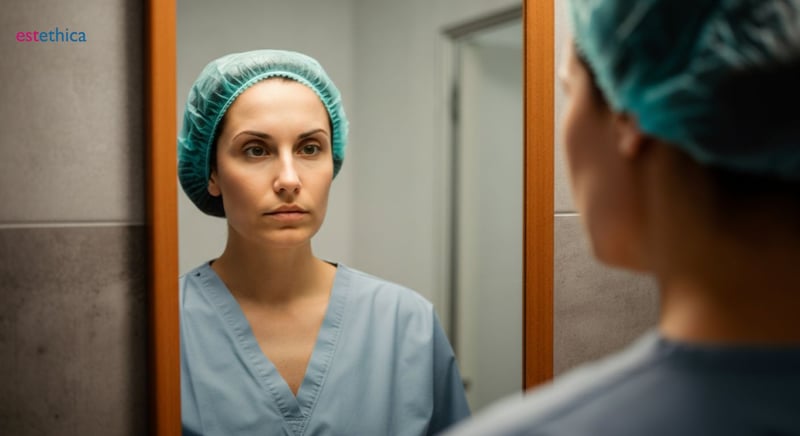Mastering Rhinoplasty: Essential Insights for Your Nose Job Journey
Explore the comprehensive guide to rhinoplasty, including tips on selecting the best surgeons and understanding recovery.
Rhinoplasty, commonly referred to as a nose job, is more than just a cosmetic enhancement; it's a blend of art and science. By reshaping the nose, rhinoplasty aims to provide harmony to the facial features, enhance aesthetics, and sometimes address functional issues. With a rich history in facial plastic surgery, techniques have evolved over time, showing an impressive trajectory of innovation.
If you’re considering rhinoplasty, understanding the procedure, recovery expectations, and choosing the right surgeon are paramount. Additionally, the evolving trends in cosmetic surgery can provide insights into achieving the desired results while ensuring safety and efficiency.
Our guide explores all these aspects, focusing on a combination of cosmetic improvement and medical necessity. Whether you're looking into achieving a certain look or have medical reasons driving your decision, knowing what to expect will equip you better for the journey ahead.
Understanding the Rhinoplasty Procedure: A Comprehensive Guide
Exploring Rhinoplasty Techniques
Rhinoplasty, commonly known as a nose job, is a cosmetic surgery that reshapes the nose by altering the bone and cartilage beneath the skin. This procedure is typically performed under general anesthesia and can last between one to three hours, depending on its complexity. There are two primary approaches to rhinoplasty: open and closed techniques. Open rhinoplasty involves external incisions at the columella, providing a full view of the nasal structures, while closed rhinoplasty uses internal incisions, resulting in no visible scarring. The choice between these techniques depends on the individual case and desired outcome.
Advantages of the Piezo Technique
- Minimizes damage to surrounding soft tissues and nerves, reducing swelling and bruising.
- Utilizes ultrasonic waves for precise bone reshaping, enhancing surgical accuracy.
- Shortens recovery time, allowing patients to resume normal activities sooner. Piezo tekniği, rinoplastide geleneksel yöntemlere göre önemli avantajlar sunan kayda değer bir gelişmedir. By using ultrasonic waves, surgeons can reshape bone without harming surrounding tissues, leading to less postoperative discomfort and a quicker recovery.
- Consultation: Discuss goals and assess nasal structure with the surgeon.
- Surgery: Perform the chosen technique under general anesthesia.
- Recovery: Follow postoperative care instructions for optimal healing.
- Ensure board certification by recognized plastic surgery bodies for quality assurance.
- Seek surgeons with extensive experience specifically in rhinoplasty procedures.
- Review portfolios to assess the surgeon's style and previous outcomes.
- Initial Meeting: Discuss your goals and concerns with the surgeon.
- Risk Assessment: Understand potential risks and complications involved.
- Recovery Plan: Get detailed information about the recovery process and timeline.
- Follow your healthcare provider's care guidelines meticulously to ensure proper healing.
- Use prescribed medication to manage pain and discomfort effectively.
- Wear nasal splints as directed to support the new nose shape during the initial week.
- Rest and Elevation: Prioritize rest and keep your head elevated to reduce swelling.
- Medication and Care: Adhere to prescribed medications and care instructions for optimal recovery.
- Follow-Up Visits: Attend regular check-ups with your surgeon to monitor progress and address issues.
- Non-surgical rhinoplasty offers a temporary, incision-free option using dermal fillers for minor adjustments.
- Ethnic rhinoplasty focuses on preserving cultural nasal features while achieving aesthetic goals.
- Minimally invasive techniques prioritize swift recovery and natural-looking results.
- Consultation: Utilize 3-D imaging to visualize potential outcomes.
- Procedure: Choose between surgical and non-surgical options based on desired changes.
- Recovery: Follow personalized care plans for optimal healing and results.
Steps in a Rhinoplasty Procedure
Whether the goal is aesthetic enhancement or improved nasal function, a thorough consultation with a surgeon is crucial. They will tailor the approach to your anatomical needs while considering your aesthetic desires. For more insights into achieving successful rhinoplasty outcomes, visit Mastering Nose Aesthetics: Your Guide to Rhinoplasty Success.

Top Tips for Choosing the Best Rhinoplasty Surgeons
Evaluating Surgeon Qualifications and Experience
When selecting a rhinoplasty surgeon, it's crucial to verify their qualifications and experience. Board certification guarantees adherence to high standards of training and ethics. For instance, a surgeon certified by the American Board of Plastic Surgery is a reliable choice. Additionally, a surgeon with a robust history of performing rhinoplasties can significantly influence the success of your surgery. Reviewing their portfolio allows you to gauge their expertise and aesthetic style, ensuring it aligns with your expectations.
Understanding the Consultation Process
A thorough consultation is a hallmark of a reputable rhinoplasty surgeon. During this process, the surgeon should attentively listen to your goals and provide a realistic assessment of what can be achieved. For example, if you desire a subtle change, the surgeon should explain the techniques that can accomplish this while minimizing risks. Understanding the potential risks and having a clear recovery plan are essential for setting realistic expectations and ensuring a smooth postoperative experience. This comprehensive approach not only builds trust but also prepares you for the journey ahead.

What to Expect After Your Nose Job: Recovery Insights
Managing Post-Surgery Expectations
After undergoing rhinoplasty, commonly known as a nose job, understanding the recovery process is crucial for achieving the desired results. Initially, patients may notice significant swelling and bruising around the eyes, which typically subsides considerably after the first week. During this period, rest is paramount. Keeping your head elevated and avoiding strenuous activities can help minimize swelling. Cold compresses are also beneficial in reducing inflammation.
Essential Recovery Tips
Most patients can resume regular activities within two weeks, but it's important to avoid any actions that could risk nasal trauma. Full recovery from rhinoplasty can take up to a year, with subtle changes occurring over time, refining the nose to its permanent shape. Regular follow-ups with your surgeon are essential to address any concerns or complications promptly.
Steps to a Smooth Recovery
By understanding and adhering to these recovery guidelines, patients can enhance their healing process and achieve the best possible outcomes from their rhinoplasty. Each step in the recovery journey is vital for ensuring the nose settles into its new shape effectively, contributing to the overall success of the cosmetic surgery.

Exploring the Latest Trends in Cosmetic Surgery Techniques
Innovative Approaches in Rhinoplasty
Cosmetic surgery, particularly rhinoplasty, has evolved significantly with cutting-edge techniques enhancing both outcomes and patient experiences. One notable advancement is the use of 3-D imaging and printing, allowing surgeons to create precise surgical plans by visualizing the expected results. This technology aids in setting realistic goals and enhances communication between the surgeon and patient.
Emerging Trends in Rhinoplasty
These trends reflect a shift towards personalized and less invasive procedures, catering to diverse patient needs while emphasizing natural aesthetics.
By embracing these innovative approaches, patients can achieve harmonious results that align with their facial features and personal preferences, marking a new era in cosmetic surgery.
Innovative Rhinoplasty Techniques with Piezo Technology
Comprehensive Rhinoplasty Care: From Consultation to Recovery
Frequently Asked Questions
What is rhinoplasty and why is it performed?
What are the differences between open and closed rhinoplasty techniques?
How can I choose the best rhinoplasty surgeon?
What should I expect during the recovery period after a nose job?
Are there any innovative trends in rhinoplasty techniques?
Discover the path to your healthiest and most beautiful self with estethica's award-winning services. Contact us today for a free consultation and experience the pinnacle of aesthetic and healthcare excellence.
📞 Call Now for Your Free Consultation